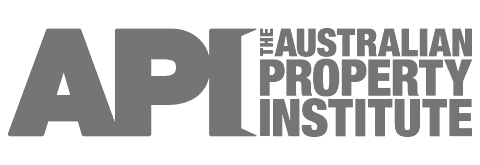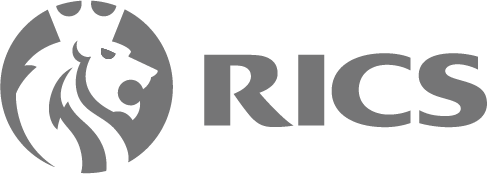PP&E Valuation Definitions
The team at Plant and Equipment Valuation VIC always prioritises the needs of our clients. The best way to ensure clients are satisfied with their valuation is to practice good communication. For many, valuations are a completely foreign concept. When something is new and unfamiliar, learning all the terms can be an overwhelming process. We aim to make things simple and stress-free. Our specialists usually speak in a manner that is easy to understand as well as provide extra guidance and consideration to anyone that needs it.
If you are the sort to do a bit of extra homework and reading before hiring a professional of any kind, we have provided some valuation definitions for your convenience. Becoming more familiar with these terms can help you better communicate with your plant and equipment valuer and ensure you get exactly what you need from your valuation report.
Many of the definitions below have been written by one of our experts and others are official definitions from the Australian Property Institute (API)* website, the Glossary of Defined Terms provided by the Australian Accounting Standards Board (AASB)** and the International Valuation Glossary that has been published by the Royal Institution of Chartered Surveyors (RICS).*** Our valuers follow the valuation standards of these organisations and so we use their terminology and definitions.
To make it easier to find the term you are looking for, we have separated these definitions into three sections:
- Key Plant and Equipment Valuation Definitions: Terms that are often said by our specialists and are used throughout our website.
- Value Definitions: When it comes to having an asset valuation, there are several types of values that can be calculated. Knowing what type of value you want makes it easier to communicate with the valuer what you hope to achieve from your report.
- General Valuation Definitions: General valuation terminology that may be encountered through conversations with a valuer or through your research of valuations.
Key Plant and Equipment Valuation Definitions
PLANT AND EQUIPMENT
Fixed (tangible) assets of a business. Items that produce income without being consumed or sold to conduct business. These assets may refer to machinery, equipment, and appliances.
PLANT AND MACHINERY
A term used interchangeably with plant and equipment. Both have the same meaning and often refer to items such as vehicles, equipment, cranes, machines and property.
PROPERTY, PLANT AND EQUIPMENT
Tangible items that:
- 1. are held for use in the production or supply of goods or services, for rental to others, or for administrative purposes; and
- 2. are expected to be used during more than one period. *
VALUER
A professional with the necessary qualifications to find the value of items in an official capacity, creating a formal valuation or appraisal.
VALUATION
An established, ethical and evidence-based process for assessing the monetary value of an asset at a specified date, that is legally defensible and undertaken by a qualified, professional Valuer. *
PROPERTY VALUER
A person that is licensed/registered to conduct valuations of real property. For our firm, a property valuer is a certified professional who values land and structures/ buildings.
PLANT AND EQUIPMENT VALUER
A professional valuer that has gained the necessary qualifications and expertise to perform valuations or appraisals of plant and equipment.
P&E
The abbreviation of plant and equipment. This is used by property professionals including our valuers.
PP&E
A common abbreviation of Property, Plant and Equipment. Generally used by accountants and other professionals of the finance sector.
P&M
The established abbreviated form of Plant and Machinery used by valuation professionals. Can be seen frequently on our site as a part of the title of certified plant and machinery valuers from the Australian Property Institute.
AUSTRALIAN PROPERTY INSTITUTE
An organisation that sets and maintains the nationwide standards of property professionals in Australia. Members of this organisation must be highly trained, qualified that continually develop their skills and have a great amount of recent experience.
API
Abbreviation of Australian Property Institute. The nation’s leaders in setting and maintaining high standards for all types of professionals in the property sector.
CERTIFIED PRACTISING VALUER
A certification from the API given to professional valuers that meet their criteria of education, training, and experience in performing valuations.
CPV
The abbreviation of Certified Practising Valuer. A valuer must meet the API’s criteria of a qualified professional to gain this certification.
CERTIFIED PRACTISING VALUER (PLANT AND MACHINERY)
An API certification specific to valuers who meet the API’s requirements of a highly qualified professional in plant and machinery valuations.
ROYAL INSTITUTION OF CHARTERED SURVEYORS
A professional body that has international recognition for promoting and enforcing the highest professional standards of those who value, develop and/or manage land, real estate, construction, and infrastructure.
RICS
The recognised abbreviation of the Royal Institution of Chartered Surveyors. An organisation that is globally respected for its standards and guidelines for professionals of land, real estate, construction, and infrastructure.
Value Definitions
MARKET VALUE
The estimated amount for which an asset or liability should exchange on the valuation date between a willing buyer and a willing seller in an arm’s length transaction, after proper marketing and where the parties had each acted knowledgeably, prudently and without compulsion. ***
ENTERPRISE VALUE
The total value of the equity in a business plus the value of its debt or debt-related liabilities, minus any cash or cash equivalents available to meet those liabilities. *
EQUITY VALUE
The total market value of a whole business once all debts have been paid, relieved and/or settled.
FAIR MARKET VALUE
A representation of the price, expressed in terms of cash equivalents, at which property would change hands between a hypothetical willing and able buyer and a hypothetical willing and able seller, each acting at arms-length in an open and unrestricted market, when neither is under compulsion to buy or to sell and when both have reasonable knowledge of relevant facts. ***
FAIR VALUE
The price that would be received to sell an asset or paid to transfer a liability in an orderly transaction between market participants at the measurement date. *
FORCED LIQUIDATION VALUE
A form of Liquidation Value in which an asset or assets are presumed to be sold with less than a reasonable period of market exposure. Contrast with Orderly Liquidation Value. ***
GOING CONCERN VALUE
A Premise of Value that assumes the business is an ongoing commercial enterprise with a reasonable expectation of future earning power. ***
INVESTMENT VALUE
A Standard of Value considered to represent the value of an asset or business to a particular owner or prospective owner for individual investment or operational objectives. Also known as value to the owner. ***
LIQUIDATION VALUE
The amount, net of relevant costs (e.g., preparation and disposal), that would be realised if the business is terminated, and the assets are sold. See also Orderly Liquidation Value and Forced Liquidation Value. ***
MARKET RENTAL VALUE
The amount that could fairly be charged towards a willing lessee by a willing lessor in an arm’s length transaction at a certain date as determined using market data.
NET ASSET VALUE
The difference between a business' total assets and liabilities restated at a particular Standard of Value rather than accounting book values. ***
NET BOOK VALUE
The difference between a business' total assets and liabilities at accounting book values (synonymous with book equity). With respect to a specific asset, this is the original capitalised cost less accumulated amortisation, depreciation, depletion, allowances, or impairment. ***
ORDERLY LIQUIDATION VALUE
A form of Liquidation Value in which the asset or assets are presumed to be sold over a reasonable period of market exposure to maximise expected return. Contrast with Forced Liquidation Value. ***
SALVAGE VALUE
The value of an asset at the end of its economic life given the purpose for which the asset was created. The asset may still have value for an alternative use or for recycling. ***
STANDALONE VALUE
The value of an asset, business, or investment estimated without considerations of potential Synergies. ***
SYNERGISTIC VALUE
The expected value resulting from a combination of two or more assets or businesses, which is greater than the sum of the separate individual parts. ***
General Valuation Definitions
APPRAISAL
Is commonly used in place of the term valuation. However, many use the term for an assessment made by licensed real estate agents and therefore has the reputation of being informal, unofficial, and less accurate.
ARM’S LENGTH
A transaction between two or more willing and independent parties. The parties are on equal footing and are not related in any way to one another or have had any previous affiliation.
ASSET
A resource:
- controlled by an entity as a result of past events; and
- from which future economic benefits are expected to flow to equity. **
ASSETS REGISTER
A document that is a detailed list of an entity’s assets. It includes essential information about each asset. It is useful for keeping track and maintaining each asset.
BUSINESS
A commercial, industrial, service, or investment entity (or a combination thereof) pursuing an economic activity. *
BUSINESS COMBINATION
A transaction or other event in which an acquirer obtains control of one or more businesses. Transactions sometimes referred to as ‘true mergers’ or ‘mergers of equals’ are also business combinations as that term is used in this Standard. **
CAPITALISATION RATE
Can be referred to as “Cap Rate”. It is a percentage that represents the estimated rate of return of the owner’s investment. The rate is commonly used by investors as a valuation measure to compare investment opportunities.
CLASS OF ASSETS
A grouping of assets of a similar nature and use in an entity’s operations. **
COST
The amount of cash or cash equivalents paid or the fair value of the other consideration given to acquire an asset at the time of its acquisition or construction, or, when applicable, the amount attributed to that asset when initially recognised in accordance with the specific requirements of other Australian Accounting Standards, for example AASB 2 Share-based Payment **
COST APPROACH
A valuation method that determines the value of an asset by finding out what is required to completely replace it through reconstruction or purchase of its equivalent.
DEPRECIATION
The systematic allocation of the depreciable amount of an asset over its useful life. **
DESKTOP ASSESSMENT
A report prepared:
- by Valuers relying on specified documents and information; and
- that involves no physical inspection of the Subject Property; and
- that produces and Indicative Assessment of value of the Subject Property. *
EQUITY
The residual interest in the assets of the entity after deducting all its liabilities. **
ECONOMIC OBSOLESCENCE
A form of depreciation or loss in value or usefulness of an asset caused by factors external to the asset, especially factors related to changes in demand for products or services produced by the asset. ***
FUNCTIONAL OBSOLESCENCE
A loss of utility resulting from inefficiencies in the subject asset compared to its replacement that results in a loss of value. *
GOING CONCERN
A business that is currently operating and is expected to continue making a profit in the foreseeable future.
GOODWILL
An asset representing the future economic benefits arising from other assets acquired in a business combination that are not individually identified and separately recognised. **
GROSS RENT
The rental reserved or derived under lease or tenancy arrangement(s) where there is no further obligation on the tenant to pay any other property costs other than tenancy utilities and cleaning. *
HIGHEST AND BEST USE
The use of an asset that maximises its potential and that is physically possible, legally permissible and financially feasible. *
IMPAIRMENT
When a fixed asset has lost value that is considered to be unrecoverable.
INCOME APPROACH
A valuation approach that provides an indication of value by converting future cash flows to a single current capital value. *
INTANGIBLE ASSET
An asset that lacks physical substance and derives value from the economic properties that grant rights and/or Economic Income to its owner (e.g., patents, copyrights, trademarks, or customer relationships). ***
LEASE
An agreement whereby the lessor conveys to the lessee in return for a payment or series of payments the right to use an asset for an agreed period of time. **
LESSEE
An individual that is named on a lease as a person renting land or property. Also referred to as a tenant.
LESSOR
An owner of a property that is leased to another. Commonly known as a landlord.
MARKET APPROACH
A valuation approach which provides an indication of value by comparing the subject asset with identical or similar assets for which price information is available. *
MODERN EQUIVALENT ASSET
An asset that has been designed and produced using more recent or current techniques and/or materials. This asset must be used in a similar manner or serve the same purpose as the asset that is being valued.
OBSOLESCENCE
Describes the point at which an asset has lost value due to no longer being considered useful or desirable.
RATE OF RETURN
An amount, expressed as a percentage of the amount of the investment, of anticipated or realised Economic Income and/or change in value of an investment. ***
REAL PROPERTY
A defined area of land and all permanent attachments including structures, dwellings, improvements, and natural elements.
REPLACEMENT COST
The current cost of a similar asset offering equivalent utility. *
RENT REVIEW
A periodic review of rental under a lease using a predetermined method. *
RETURN ON INVESTMENT
The ratio that presents the investment against its cost. This is used by investors to measure the efficiency of an investment.
TANGIBLE ASSET
An asset that has physical form and derives value from its physical properties or tangible nature (e.g., real estate, property, plant, equipment). Contrast with Intangible Asset. ***
TECHNICAL OBSOLESCENCE
When an older asset of a good condition and working order is no longer deemed desirable or useful to a business. The asset is replaced by a newer technology or asset that makes the operations of the business easier, more efficient, and cost-effective.
The Experts You Can Definitely Count On
Knowing these terms can help you set an asset valuation criteria your valuer must follow for your plant and equipment valuation report. However, with or without familiarising yourself with these terms, our team here at Plant and Equipment Valuation VIC will actively listen to your needs and create a report that is perfect for you and your goals. Our highly experienced valuers are the experts you can trust and rely on.
If you would like to speak with one of our specialists about having a plant and equipment valuation in Melbourne, contact our office today. To reach us you may call on (03) 9008 7267 or fill out our online contact form.





